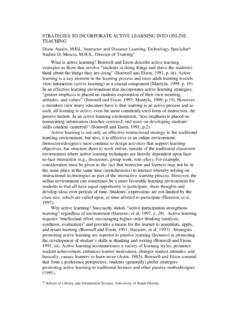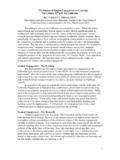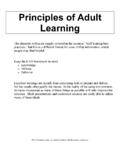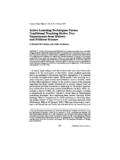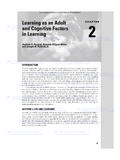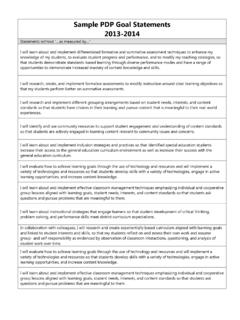Transcription of Addressing the Learning Needs of the ESL Nursing …
1 Addressing the Learning Needs of the ESL Nursing StudentRandall S. Mangrum, RN, MSNV irginia League for Nursing Annual MeetingApril 25, 2015 Disclosures No conflicts of interest were identified with the speaker. There is no commercial support or sponsorship for this the need for diversification within the Nursing the challenges faced by the ESL Nursing support that promotes academic success for ESL Nursing Within The Nursing ProfessionHealth Resources and Services Administration (2013), Census Bureau (2014)Registered Nurse WorkforcePractical/Vocational Nurse % Indian/Alaska state of diversity in the Nursing workforce does not reflect the diverse makeup of our patient population. Need for Workforce Diversification Within the last decade, the United States Hispanic population has grown by 43%. This group now comprises 17% of the total United States population. Overall, racial and ethnic minorities comprise of the United States population.
2 It is anticipated that by the year 2050, the United States will have a majority minority population; meaning that over 50% of the population will belong to a minority group. The rate of aging is five times that of overall population growth. By the year 2050, it is estimated that 30 percent of the United States population will be over the age of 65 for Workforce DiversificationIncreasing racial and ethnic diversity within Nursing is important because evidence indicates that diversityis associated with improved access to care for racial and ethnic minority patients, greater patient choice and satisfactionand better educational experiences for health professions for Workforce DiversificationESL Student PopulationHenrico County AdultESL ProgramProgramNumberof StudentsNumberof Countries RepresentedPercentage Hispanic/LatinoABE/GED412041%ESOL6016044 %Jackson & Fagan, personal communication, 2015 Virginia USAF oreign Born Other Than English Spoken At for the ESL Nursing StudentAs High as 85%20 40% LowerChallenges for the ESL Nursing StudentThere are four main areas of concern that have an impact on academic success for the ESL Nursing Student.
3 Language Learning Models Test Taking Cultural DifferencesEffective Strategies To Promote Academic SuccessLanguage Universally mentioned as the primary concern particularly in the clinical Model of Language AcquisitionBasic Interpersonal Communication Skills (BICS)Cognitive Academic Language Proficiency (CALP)Student Academic SuccessLanguageThe medical field presents a unique challenge for the ESL student; this student must not only be proficient in general English, but they must also learn medical terminology, another language in itself (Guhde, 2003, p. 114).Language Success StrategiesLearning Models ESL students are likely to have experienced different Learning models in their native countries. Transmission model of education versus active Learning model. ESL students have likely been successful as passive recipients of information. Asking questions of the instructor may not be considered respectful. Memorization is the primary Learning critical thinking rather than rote Models Success Strategies Faculty must make their expectations clear, explaining the active Learning process and the role that students play in their own Learning .
4 Tutoring Resources and Mentoring Programs help bridge language and cultural differences. They also increase opportunities for English immersion in social settings that can lead to improvement in language skills. Examples of completed assignments. Study guides. Exit Pass may build confidence with asking questions. Concept mapping or the use of Nursing mnenomicsmay prove to be successful when presenting new Taking There is a relationship between lack of English proficiency and NCLEX performance. Language difficulties cause problems on course tests and multiple-choice questions are particularly difficult for ESL students. Many ESL students are coming from an environment where their subject matter understanding was evaluated using essay type questions. Wordy scenarios intended to provide context for the questions can challenge the language skills of ESL students rather than accurately assess their Nursing knowledge. Linguistic complexity and grammatical errors can lead to confusion, lack of clear directions and cause difficulty for non-native English Taking Success Strategies Effective study strategies should be ESL students may require extended testing time for reading and processing testing items initially.
5 Alternate testing environments should be considered. Use of a bilingual dictionary should be permitted during testing Taking Success Strategies Students must practice NCLEX style multiple choice/select all that apply type questions: Utilize practice questions from textbooks and questions from NCLEX review books Help students to understand the importance of reviewing rationale for practice questions even if the correct answer was selected helps to improve English language comprehension. Simplify the vocabulary and sentence structure of Nursing test Taking Success Strategies Reduce linguistic complexity of test questions by: Use shorter, simpler sentences State information directly; don t hide it in the sentence. Avoid completion format questions fill in the blank Highlight key words, such as MOST, LEAST, and BEST Use common words Post testing academic counseling Were test items missed due to Problems with language Misunderstanding of Nursing contentCultural Differences Issues such as therapeutic communication, including eye contact and touch; meeting assignment deadlines or patient medication schedules; planning for patient care; and providing appropriate patient education are all affected by cultural values.
6 ESL students are likely to have difficulty with psychosocial content because of their different cultural backgrounds. ESL students frequently feel isolated and may need assistance in accessing language, tutoring, and counseling Differences Success Strategies Faculty commitment and support are significant factors in minority student success Need for faculty development related to cultural competence. Do you know your students? Particularly from a cultural and academic background. ESL students identify faculty discrimination and stereotyping as a greater challenge than academics. Get to know the names of your ESL students and how to pronounce their names correctly. Incorporate the knowledge and cultural experiences of students into class discussions about appropriate care for patients of different cultural The Language Learning Needs ESL StudentsThe literature demonstrates that the ESL student has unique language Learning Needs . By Addressing these Needs in a comprehensive program, resources and tools can be directed to the student thereby increasing their opportunity for Is Happening In Your Program?
7 ReferencesAyoola, A. (2013, May). Why diversity in the Nursing workforce matters [Blog post]. Retrieved from #. , P., Sutphen, M., Leonard, V., & Day, L. (2010). Educating nurses: A call for radical transformation. San Francisco, CA: , J. A. (2003, Winter). English-as-a-second-language (ESL) Nursing students: Strategies for building verbal and written language skills. Journal of Cultural Diversity, 10(4), 113-117. Retrieved from , E., & Beaver, S. (2012, August). Faculty support for ESL Nursing students: Action plan for success. Nursing Education Perspectives, 33(4), Resources and Services Administration. (2013). The Nursing workforce: Trends in supply and education[Analysis Report]. Retrieved from League for Nursing . (2014). A vision for recognition of the role of Licensed Practical/Vocational Nurses in advancing the nation s health[NLN Vision Series]. Retrieved from , M. A. (2012, Spring). English-as-a-second language (ESL) Nursing student success: A critical review of the literature.
8 Journal of Cultural Diversity, 19(1), 26-32. Retrieved from , P. ( ). Second language acquisition essential information. Retrieved from , B. D., Butler, A. S., & Bristow, L. R. (Eds.). (2004). In the nation s compelling interest: Ensuring diversity in the health care workforce. Retrieved from States Census Bureau. (2014). State and county quickfacts. Retrieved from
